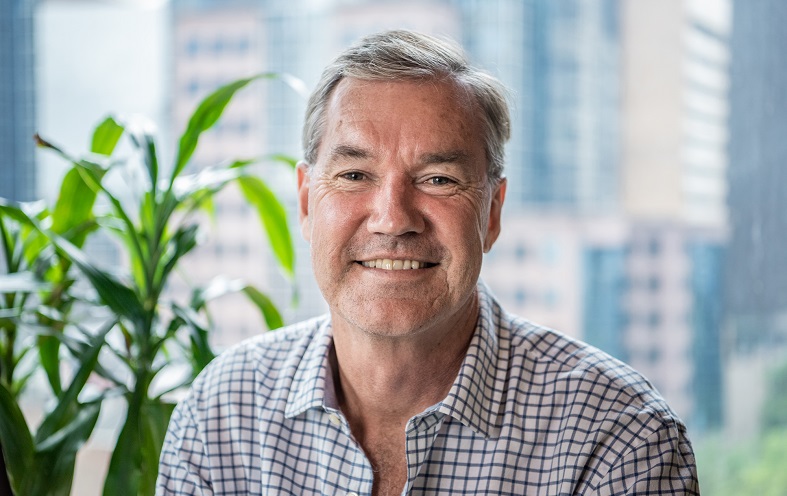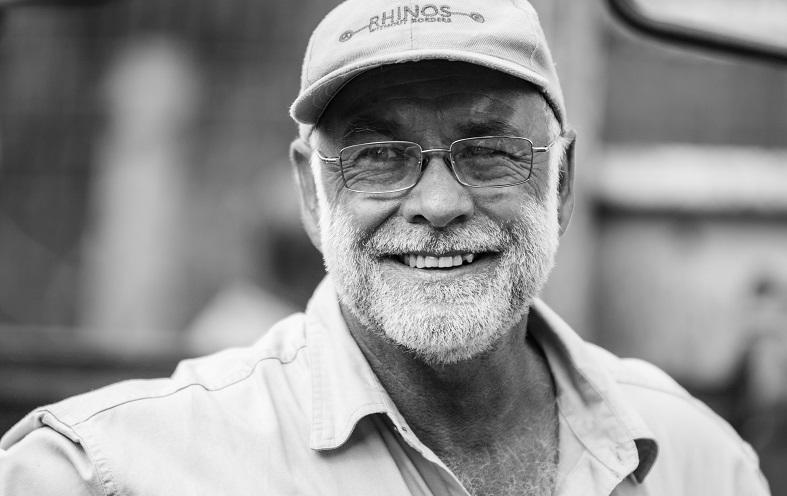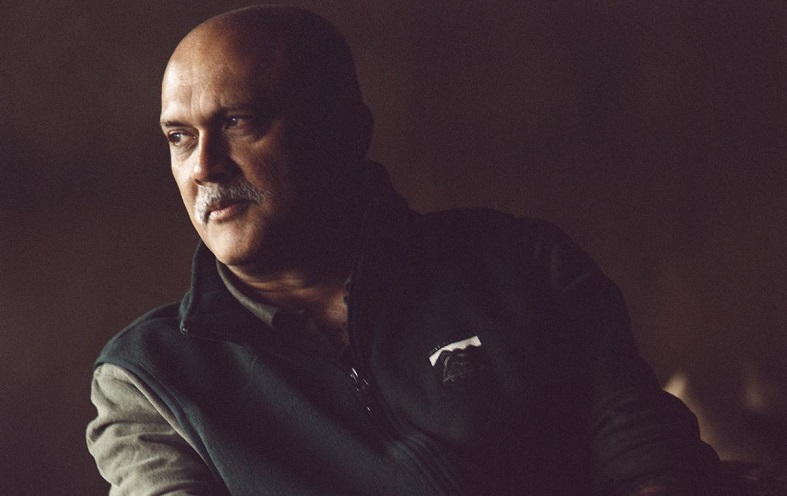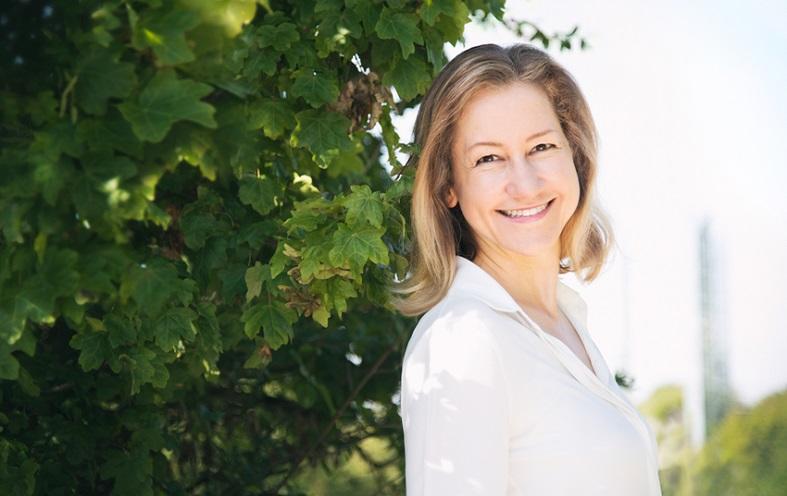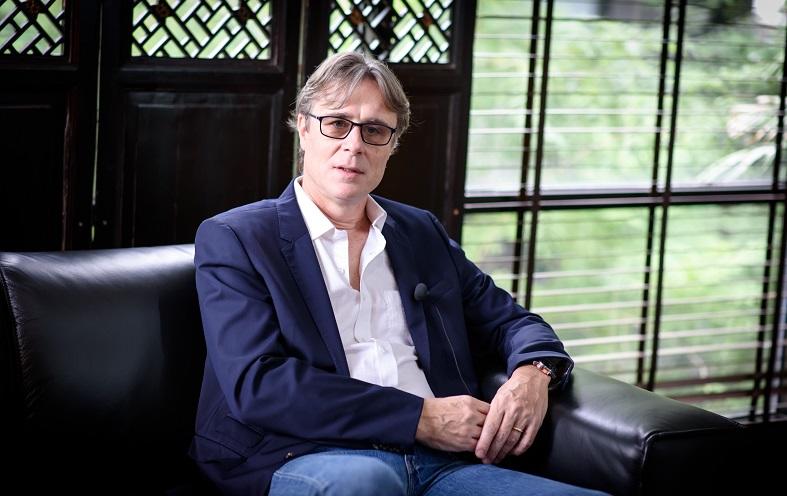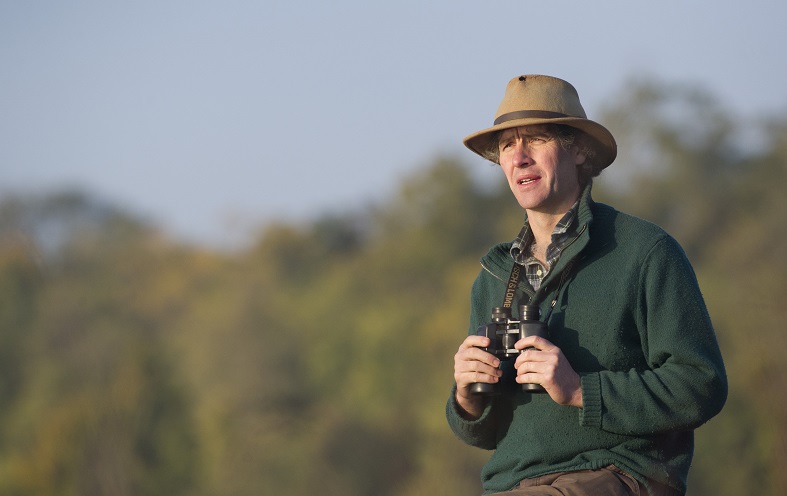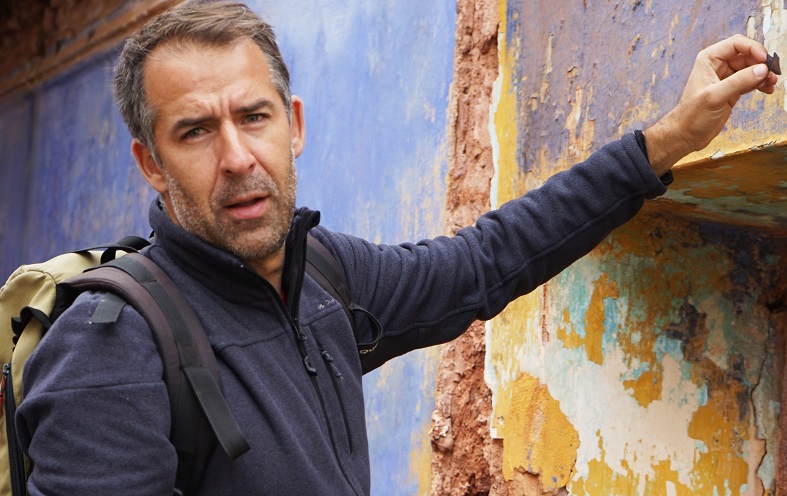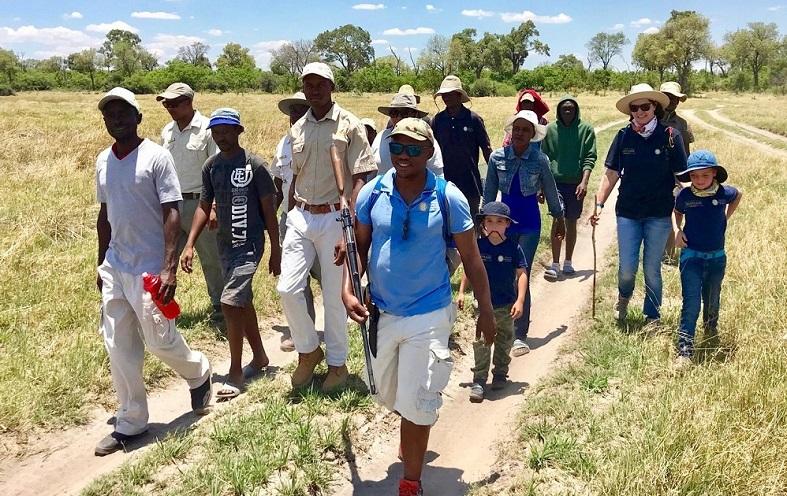
Great Plains Conservation is a good example of how ecotourism operators in Africa can actively protect and preserve wildlife as a key part of their business strategy, leading to benefits on all sides.
Dorian Hoy, Managing Director of Botswana-based Great Plains Conservation, tells us how the award-winning tour business approaches sustainability, and the strategy it uses to connect wildlife protection with responsible tourism.
Learn about:
- Great Plains Conservation’s journey towards sustainability awareness;
- Why responsible tourism practices are now more important than ever;
- The key challenges Great Plains Conservation is facing as tourism business;
- How Great Plains has teamed up with its business competitor &Beyond for the benefit of wildlife conservation;
- Why wildlife protection in Africa is in such a dire state, and how tourism can help;
- How Great Plains Conservation has benefited from winning the responsible tourism Africa award;
- How to make sustainability work, financially.
Dorian, your passion for wildlife and conservation has taken you to destinations as diverse as Australia, Morocco and Abu Dhabi. Do you remember the first time you heard about “sustainability” linked to tourism? Which were your initial thoughts?
Yes, it would have been in the early days working in the Sabi Sand Game reserve. Back then, around the early ’90s, sustainability initiatives were not at the forefront of people’s thoughts.
I think what struck me the most back then was the massive footprint of the camp and supporting infrastructure in this pristine area. It didn’t sit well that we were generating a huge amount of waste and leaving behind a negative impact on the environment. It took a few years though to understand that there were alternatives to the way we did things.
How has your view on tourism and sustainability changed since then?
My view of tourism has changed a lot. Back then the pressures on natural habitats were not as great as they are today. We were not so worried about global warming then. The concepts of solar power and sewage treatment plants were completely unknown to me.
In the early days, there also were a number of benchmark judging schemes being set up so you could get accreditation on how ‘green’ you were. I looked into these and became quite despondent because I felt a lot of them were doing it for the wrong reasons. Often, the organisations being accredited were only interested in the publicity side of it.
Now there is a realisation that the status quo is particularly delicate. We hear about the plummeting numbers of wildlife, the demand for cattle and other farming lands, the anger towards wildlife that impacts on rural lives and so on.
My outlook now is that we all have to work a lot harder to keep what we have from disappearing and that it is everyone’s responsibility to help.
Politics play a massive part in this because, as populations rise, we have to find some way to appease the populace in order to retain votes. This often comes to the detriment of soft targets like our natural treasures.
As Managing Director of Great Plains Conservation (GPC), and having led conservation programs of crucial international importance, such as Save our Rhinos, you have witnessed the evolution of tourism as a tool for wildlife conservation. In your view, are we on the right track in terms of involving tourism/travellers as one solution to wildlife conservation?
On the right track? Well, I do certainly believe that the majority of companies involved in ecotourism want to do the right thing. At Great Plains Conservation, we try to do the right thing, no matter whether it is financially viable or not.
I don’t think every company has the same philosophy though. I am looking at the phrase ‘on the right track’ and what comes to mind is that the challenges for wildlife conservation are only going to become greater and more complex.
I don’t know if we are doing enough to involve those who travel to our lodges and camps in wildlife conservation. I see a handful of guests who come to our lodges with a clear interest in contributing to conservation programs. But how many of our guests would like to contribute in some form but don’t know how? If we can somehow harness that potential to do more, that would be good.
With the increasing pressures on wildlife and their habitats, I am not sure we are on the right track to ultimately save what is left. The stakes are so high right now.
That is just my opinion, but it should not let us become despondent.
From your perspective, which have been the main challenges that Great Plains Conservation has had to overcome to be where it is today?
I would say keeping ahead of the pack is a big challenge. From a tourism perspective, the expectation of guests is rising all the time. All the top companies in the industry rise to this expectation. If you don’t keep up, you will be found wanting.
The economic climate does of course add to challenges, as does the political climate. My view is that this is a storm, and as with any storm it will end. You just have to ride it out.
With conservation, an achievement that we are all very proud of is that we have managed to work together with one of our biggest competitors to relocate 100 rhinos (77 so far, rest early next year). Such a big achievement between direct competing tourism companies is something to behold.
I say this is an achievement because I have seen so many initiatives fail because of personal disagreements.
Great Plains Foundation runs 3 main initiatives (Save Our Rhinos, Save Our Lions and Community Upliftment); can you tell us how those initiatives have positively impacted the local communities involved?
Firstly, our rhino project. Bringing in seventy-seven rhinos into Botswana so far, with more to come, has certainly highlighted the plight of rhinos to local communities. It brings with it a sense of pride for communities to be part of a great project like this.
The rhino project also helped us realize that there are certain iconic species out there which people who bring the tourism dollar want to see. Not saying one species is more important than another, but without the rhinos, lions, elephants – the inclination to travel to the safari Africa would not be there.
Our community projects obviously have a far more tangible impact on the communities and this grows from strength to strength. This also ties into your question about whether we are on the right track in involving tourists as a solution.
I think that there is a limited amount we can actually do as one company. But by involving our guests, we really can achieve so much. I know we have touched many lives in one particular community, but that is not enough. We can and will do more, so more community members benefit.
We are under no illusion that dynamics have changed even with community expectations. We have to adapt to that if we want to succeed in our business and conservation efforts.
Which KPI do you use to measure and monitor the success of your sustainability goals and operations?
We are very non-corporate as a company. We don’t have stringent measures in place to ensure that we are successful in our endeavours in this area. We try to have everyone who is employed by Great Plains to be part of the company because they share the same philosophy. If we get this right, we really don’t need to audit and monitor ourselves formally. Commitment to our philosophy is really all it takes.
Taking into account the dire state of wildlife protection in Africa overall, with the last wild lions and leopards predicted to face extinction within the next one or two decades, what would it take to make tourism and travellers an even stronger part of the solution? What is holding us back?
Sadly, the pressures on our natural resources only grow year by year. The global population growth is our biggest enemy, I believe, and with that, the challenges and answers become more complicated.
So, we have a certain amount of land set aside as habitat for wildlife. We have enormous population growth. We have the younger generations coming through with different expectations, and those expectations need instant gratification. When these expectations are not met, there is a possibility to look at other avenues to satisfy the expectation, and this could result in a negative impact on wildlife.
I think cattle is a huge factor across Africa, which will ultimately affect wildlife populations.
There is too much of an imbalance between those who benefit the most from these wildlife habitats that remain and those who live in the proximity, who could potentially do the most damage. I believe the way forward is for all companies who benefit from the natural resources in respective countries to be obligated to contribute more to those communities in the surrounding areas.
I think that methods of old may need to be revised and a bit of science applied, to be sure whatever initiatives are put in place, match the expectations and requirements of challenges in that particular area.
Considering the crucial role destination management and marketers play in making tourism more sustainable, would you consider them part of the problem, or the solution at the regional and national level right now? How would DMOs, for instance, have to change, in order to make a more sustainable tourism development in Africa realistic?
I see these companies benefiting off the natural recourse just as the actual lodge owners do. We have partnered with a few of our suppliers in conservation and community projects, which is encouraging. There is far too little ownership on a destination level, though, so this is a challenge we need to overcome. It is going to be interesting to see how the destination development side of the business changes in the future.
It is hard for me to say how DMOs should change to make a more sustainable Africa without stating the obvious. It is really great, though, when some of our supplier partners do get involved with our initiatives. This really works well and enhances the relationship of tour businesses. Hopefully, projects like Save the Rhinos encourage others to do the same.

As winner of the Responsible Tourism Africa award in 2016, among others – how have such recognitions impacted you personally, and the business?
Winning the Responsible Tourism Africa award brings a lot of pride to all those working for Great Plains Conservation. Everyone likes to be recognised for the effort they put in no matter what it may be.
Winning the award also gives us great recognition with our suppliers, who feel good about supporting a company that puts a massive amount of effort into conservation and community well-being. We would continue those efforts without the awards, of course, but it is still a good feeling to get the recognition.
Are there any sustainability initiatives which you are particularly proud of?
Apart from the accolades achieved, one initiative that we are proud of is being the first company in the Okavango Delta to install a solar power plant to provide power to a high-end lodge.
I am sure there were sceptics who thought it could not be achieved, or that it was too costly. To encourage others to follow, we were very open to sharing our experiences with this project.
Your 3 bits of advice for sustainable tourism entrepreneurs or business owners on how to make it work, financially?
There are a lot of school fees to pay to get this right. For example, with our solar, it is a very expensive exercise and we have learned over the years. We now have several large plants and each time we put in a new one we become more efficient.
Understanding the environment where this expensive equipment will be placed is important. If not placed in the recommended environment, the life you will get out of the equipment will be considerably less than what you are told.
For ROI [return on investment] on the solar plant, there is a sweet spot that you will find if you drew a line graph with the capital cost of the plant versus the percentage of total power requirement achieved. That sweet spot is around 80%. Going from 80% solar to 100% solar will increase the cost significantly.
Further, we have found that when raising funds for our conservation projects, transparency is critical. If funds are not going to where they are supposed to, or if the funds are being raised for a flawed idea, you will soon be found out.
If the project is completely above board and authentic, like our Rhinos Without Borders initiative, raising funds is easier and a lot more fun. This project has been going on for four years now, and fundraising for this is still very successful.
Anything else you’d like to mention?

Kane Motswana is a guide in Botswana who we work with. He is our partner with our Adventure Trails. In early November he embarked on a 470-kilometre walk through villages and wild area of northern Botswana. I recently joined him with my family for a very small part of this walk and it bought home the extent of this undertaking.
The aim of the walk is to bring awareness and appreciation of rhinos to the rural communities of Botswana. Kane has walked up to 45km per day and once he gets in he still has time to play football with the people of that particular village.
Seeing what I saw yesterday, Kane is a true conservation hero to me, and in fact, everyone who he meets along the way feels the same way about him.
Thank you, Dorian.
Learn more about Great Plains Conservation here.
Enjoyed our interview with Dorian Hoy of Great Plains Conservation on the ups and downs of running a responsible wildlife tour business in Africa? Spread the word!

